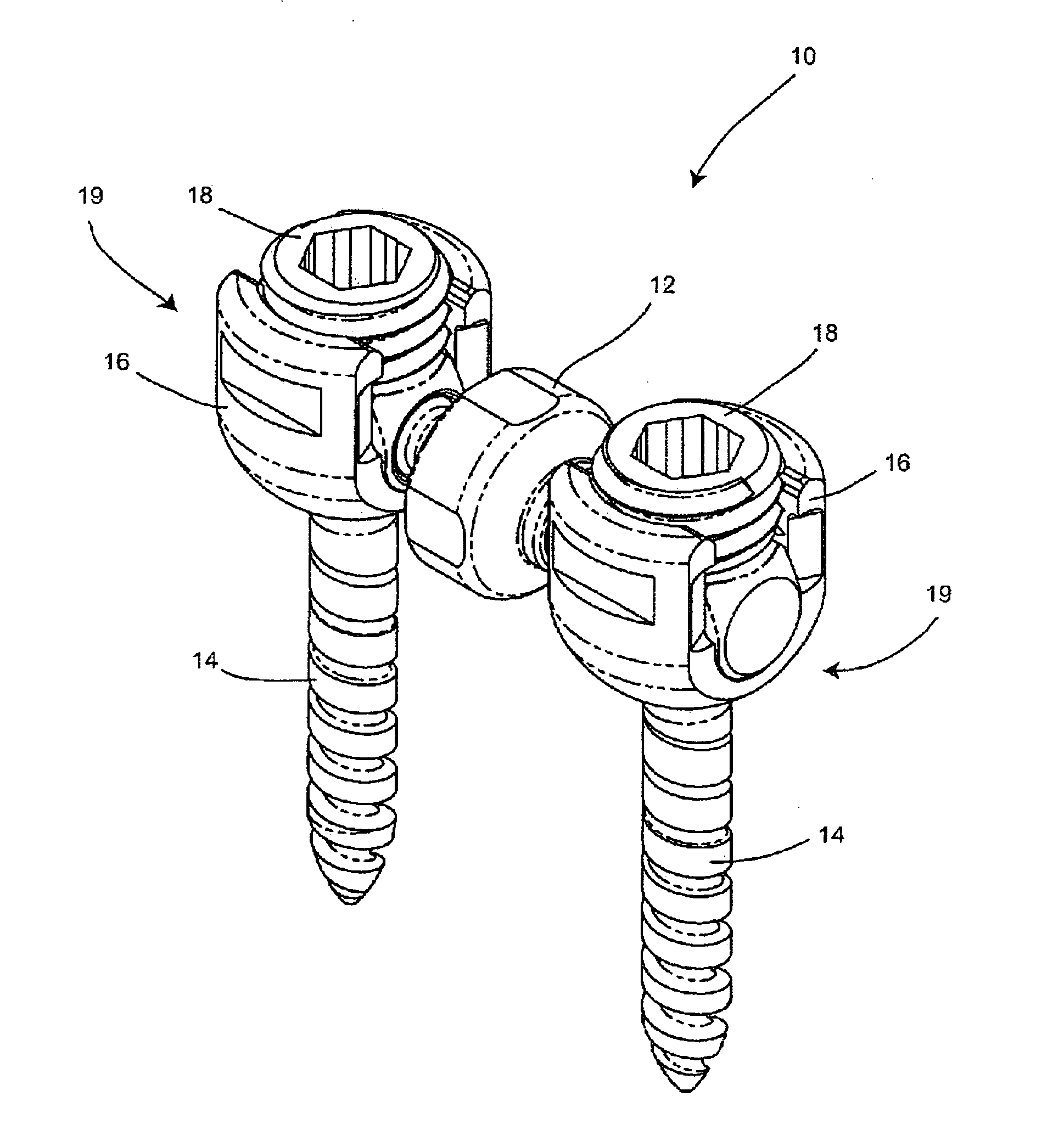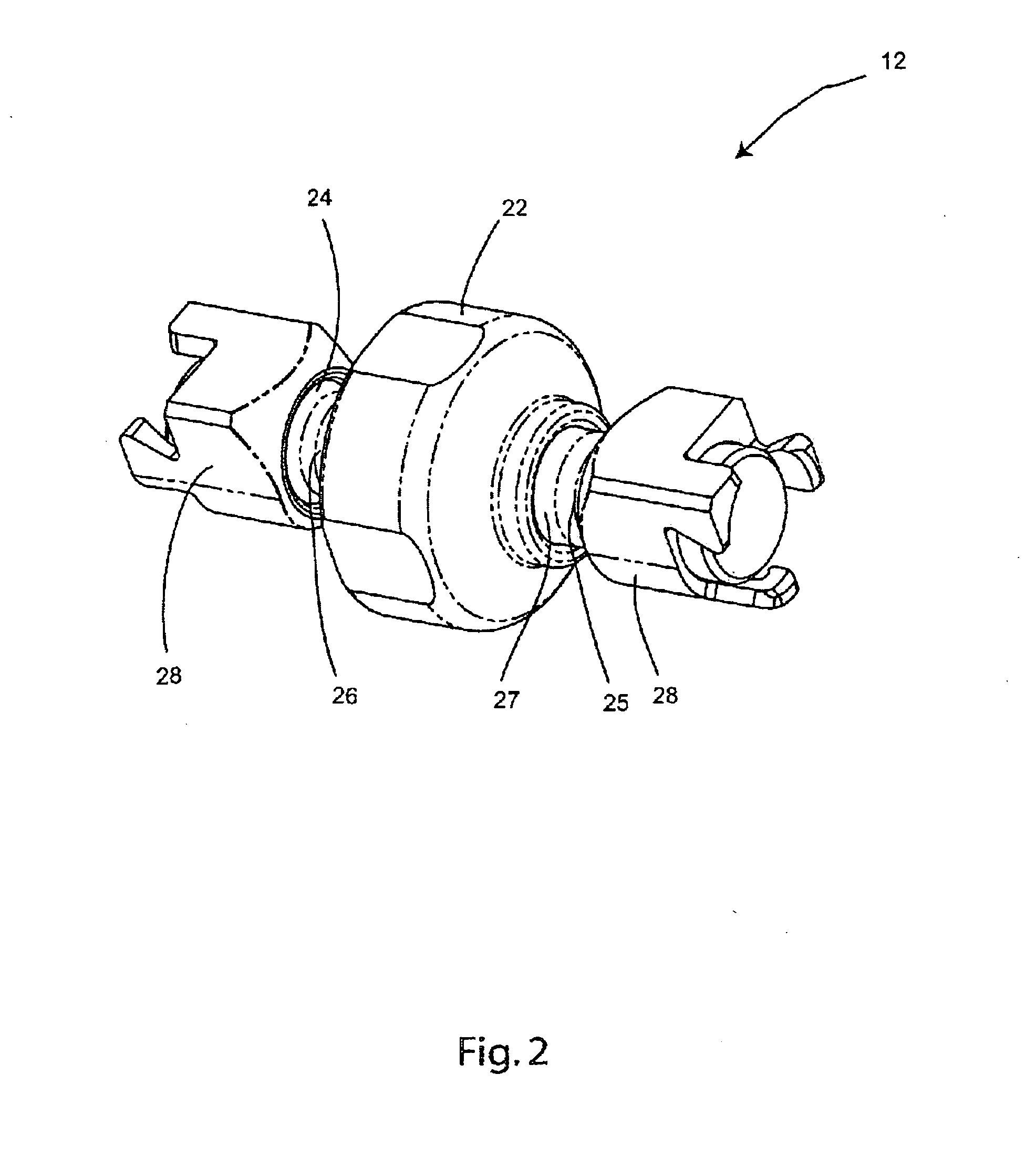System and method for dynamic vertebral stabilization
a dynamic vertebral and stabilization technology, applied in the field of orthopaedic medicine, can solve the problems of inability to do, insufficient stiffness of the damaged disc, and affecting the function of the spinal cord, and achieve the effect of improving the stability and improving the function of the spinal cord
- Summary
- Abstract
- Description
- Claims
- Application Information
AI Technical Summary
Benefits of technology
Problems solved by technology
Method used
Image
Examples
Embodiment Construction
[0044] The present invention relates to systems and methods for stabilizing the relative motion of spinal vertebrae. Those of ordinary skill in the art will recognize that the following description is merely illustrative of the principles of the invention, which may be applied in various ways to provide many different alternative embodiments. This description is understandably set forth for the purpose of illustrating the general principles of this invention and is not meant to limit the inventive concepts in the appended claims.
[0045] Referring to FIG. 1, one embodiment of a single level dynamic stabilization system 10 is shown. The dynamic stabilization system 10 preferably includes a stabilizer 12, a pair of fixation members 14, a pair of yokes 16 securable to the fixation members 14, and a pair of set screws 18. The fixation members 14, yokes 16, and set screws 18 may be any of a variety of types known and available in the art, or may optionally be specially designed for operat...
PUM
 Login to View More
Login to View More Abstract
Description
Claims
Application Information
 Login to View More
Login to View More - R&D
- Intellectual Property
- Life Sciences
- Materials
- Tech Scout
- Unparalleled Data Quality
- Higher Quality Content
- 60% Fewer Hallucinations
Browse by: Latest US Patents, China's latest patents, Technical Efficacy Thesaurus, Application Domain, Technology Topic, Popular Technical Reports.
© 2025 PatSnap. All rights reserved.Legal|Privacy policy|Modern Slavery Act Transparency Statement|Sitemap|About US| Contact US: help@patsnap.com



